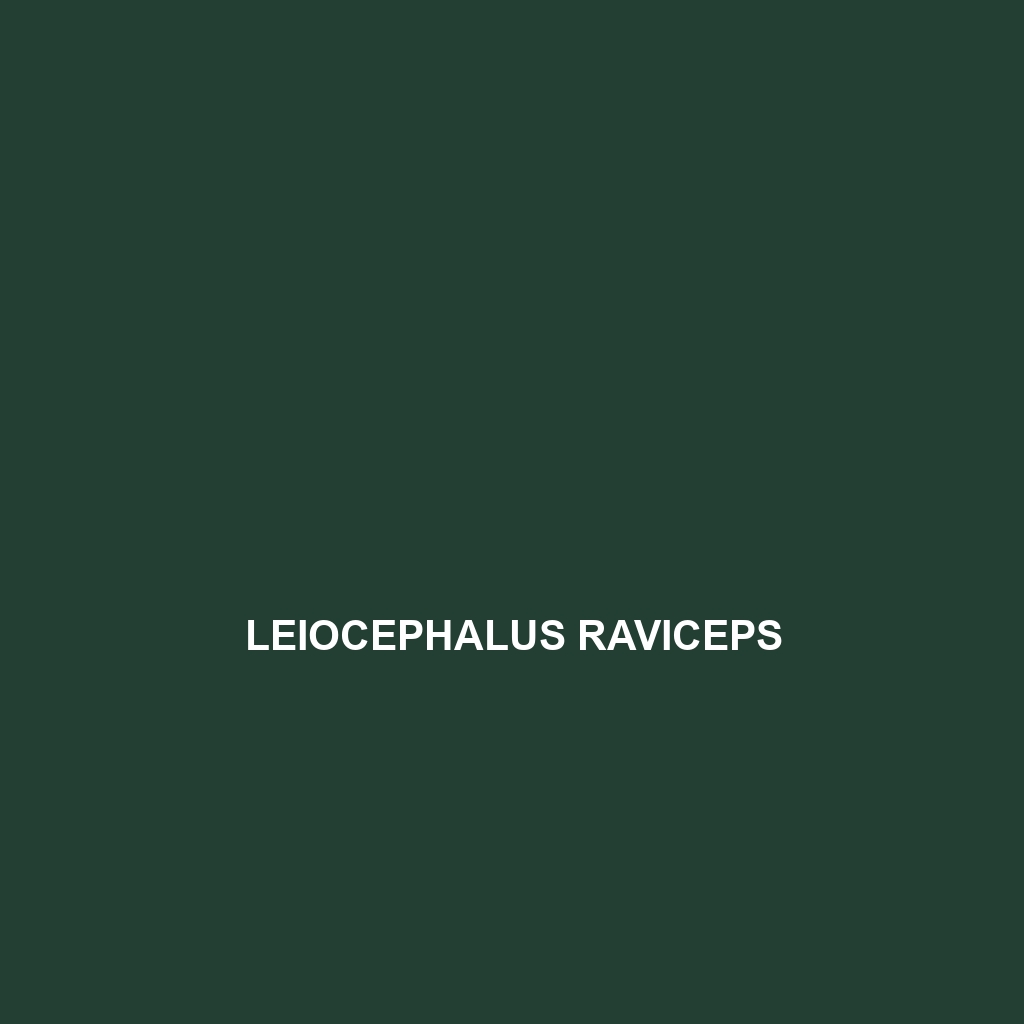Common Name
Leiocephalus raviceps
Scientific Name
Leiocephalus raviceps
Habitat
Leiocephalus raviceps, commonly known as the Curly-tailed Lizard, is primarily found in the sun-drenched, coastal regions of the Caribbean, particularly the Bahamas, and some parts of southern Florida. Preferentially inhabiting tropical and subtropical environments, this species is often associated with savannas, rainforests, and lowland forests. They thrive in areas with abundant vegetation, which provides both food and shelter. The warm climates of these regions ensure a stable temperature range, promoting a year-round active lifestyle for the Curly-tailed Lizard.
Physical Characteristics
Leiocephalus raviceps exhibits distinct physical traits that make it easily recognizable. Typically, adults range from 15 to 30 centimeters in total length, with a notable feature being their long, slender tails which can often exceed their body length. The coloration varies but generally features a blend of earthy tones, including brown, olive, and gray, adorned with patterns that allow them to blend seamlessly into their surroundings. One of the most striking characteristics of this species is the unique curve of its tail, from which it derives the name “Curly-tailed.” This adaptation not only enhances its camouflage but may also serve a role in social signaling.
Behavior
The Curly-tailed Lizard is known for both its diurnal activity and its intriguing social interactions. Inhabiting communal areas, these lizards are often seen basking in the sun, a behavior essential for maintaining their body temperature. Their territorial nature is showcased during mating seasons when males engage in elaborate displays and assertive posturing to attract females and ward off rivals. Interestingly, they have a unique method of communication that involves tail curling and body movements, which enhances visibility during social encounters. While Leiocephalus raviceps is primarily terrestrial, they are adept climbers and may take to low branches when threatened.
Diet
As opportunistic feeders, the diet of Leiocephalus raviceps largely comprises insects, small arthropods, and other invertebrates, classifying them as insectivores. Their feeding patterns display agility and keen hunting skills, utilizing their speed to catch prey. In addition to insects, they may also consume fruits and blossoms, especially during peak seasons when these food sources are abundant, showcasing a degree of omnivory.
Reproduction
The reproductive cycle of Leiocephalus raviceps is characterized by a typical pattern among lizards. Mating usually occurs in the late spring or early summer, ensuring that the hatchlings emerge during warm weather conditions. The female lays between 3 to 10 eggs, which are buried in sandy substrates, allowing for natural incubation. The gestation period is approximately 30 days, after which the hatchlings emerge fully formed and ready to fend for themselves. Parental care is minimal, with hatchlings receiving no assistance beyond being bundled within the protective environment of their nest. This reproductive strategy maximizes survival through sheer numbers.
Conservation Status
Currently classified as Least Concern by the IUCN, Leiocephalus raviceps faces various threats, primarily linked to habitat loss due to urbanization and invasive species predation. Despite its stable population in many areas, specific populations may be at risk, especially in regions experiencing rapid development. Conservation efforts focus on habitat protection and control of invasive species, ensuring the longevity of the Curly-tailed Lizard in its natural environment.
Interesting Facts
The Curly-tailed Lizard exhibits several fascinating traits that set it apart from other lizard species. One intriguing behavior is their ability to shed their tails when threatened, a defensive mechanism known as autotomy. This ability allows them to escape while the detached tail continues to wriggle, confusing predators. Additionally, the color variation among populations not only aids in camouflage but also serves to attract mates, as different colors may signify health and genetic fitness.
Role in Ecosystem
Leiocephalus raviceps plays a crucial role in its ecosystem as a vital predator of insects, helping to control pest populations. Moreover, their feeding behaviors contribute to seed dispersal in the flora they consume. As prey for larger predators, they are an integral part of the food web, representing an important link between different trophic levels. The health of their populations can serve as an indicator of ecosystem stability, and their interactions with other species highlight their role as a keystone species in their habitats.
